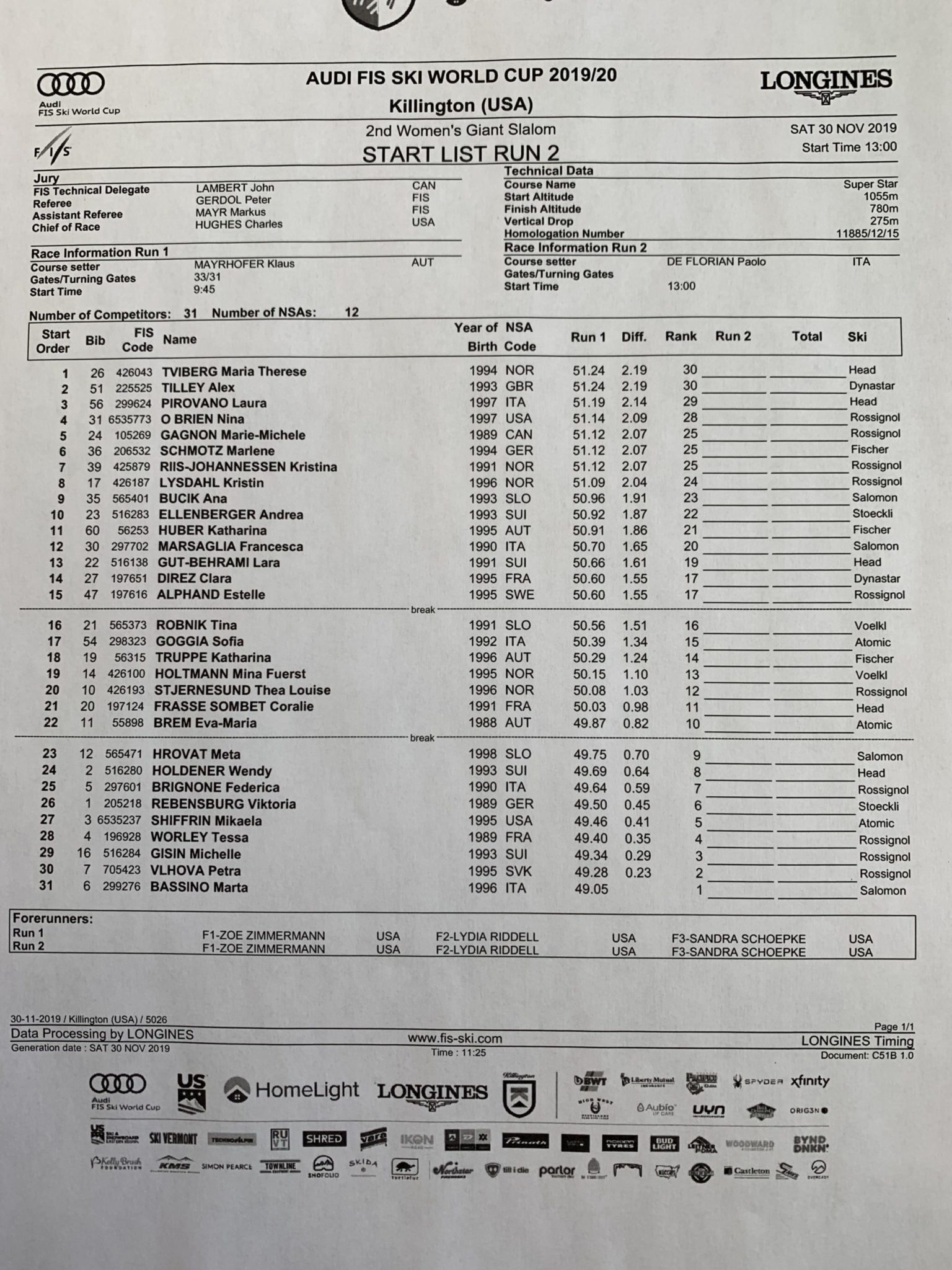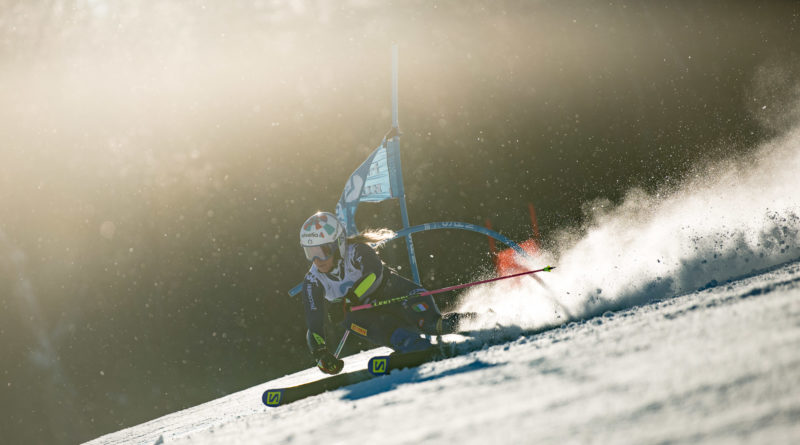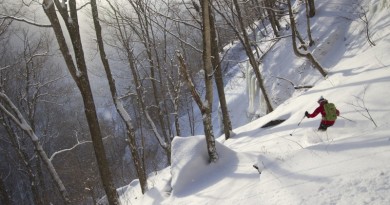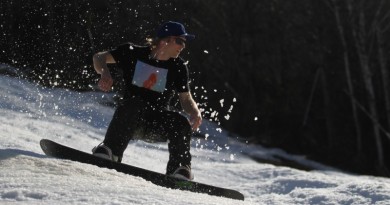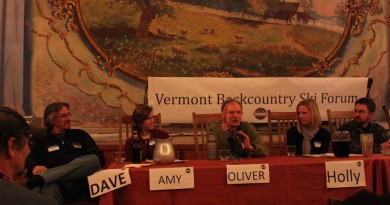Killington World Cup First Run Recap
As the sun began to cast shadows down the Superstar course,the crowds packed the grandstands, parking lots filled fast and tailgates were going strong by 9:00 a.m., in what has become a post-Thanksgiving tradition at Killington.
The Killington World Cup drew 39,000 last year and as the racers lined up at the starting gate, it looked as if that number would grow this year for the HomeLight Killington World Cup, a stop on the FIS Audi World Cup. The day started with the parade of ski club racers – young athletes from race programs around the state—and then paused for a moment of silence to remember Vermont snowboarding legend Jake Burton Carpenter, who passed away on Nov. 20.
Mikaela Shiffrin, fresh from training earlier in the week at Burke Mountain, had drawn bib #3. The only woman to beat her recently, Alice Robinson, a 17-year-old from New Zealand, drew bib #15.
“It was great to be back at Burke and train,” said Shiffrin, a Burke Mountain Academy alumna, at the Friday night press conference. “I even had a lift attendant ask me to sign the lift ticket I’d autographed in 2010 when I was a student there—that made me cry,” Shiffrin recalls. The lift mechanic, Chris Carr, must have had a premonition that Shiffrin, 15 at the time and already racing World Cup, was going places.
Shiffrin, cheered on by a huge crowd, skied conservatively on the top of the course, making up time at the bottom but ended up the first run 0.41 seconds behind leader Italian Marta Bassino, with Petra Vhlova, Michelle Gisin and Tessa Worley ahead. Robinson, who many expected to be a challenger and was coming back from an injury, fell on course. After rain earlier in the week, Saturday morning saw temperatures in the teens and a rock-solid course.
The course was, in the words of gatekeeper Bobby Cochran, “firm.” As Cochran explained, “My dad taught me never to use the word ‘icy’ but instead say ‘firm.’” But the cold temperatures did not stop the crowds from gathering at the base and cheering with force as the racers took off.
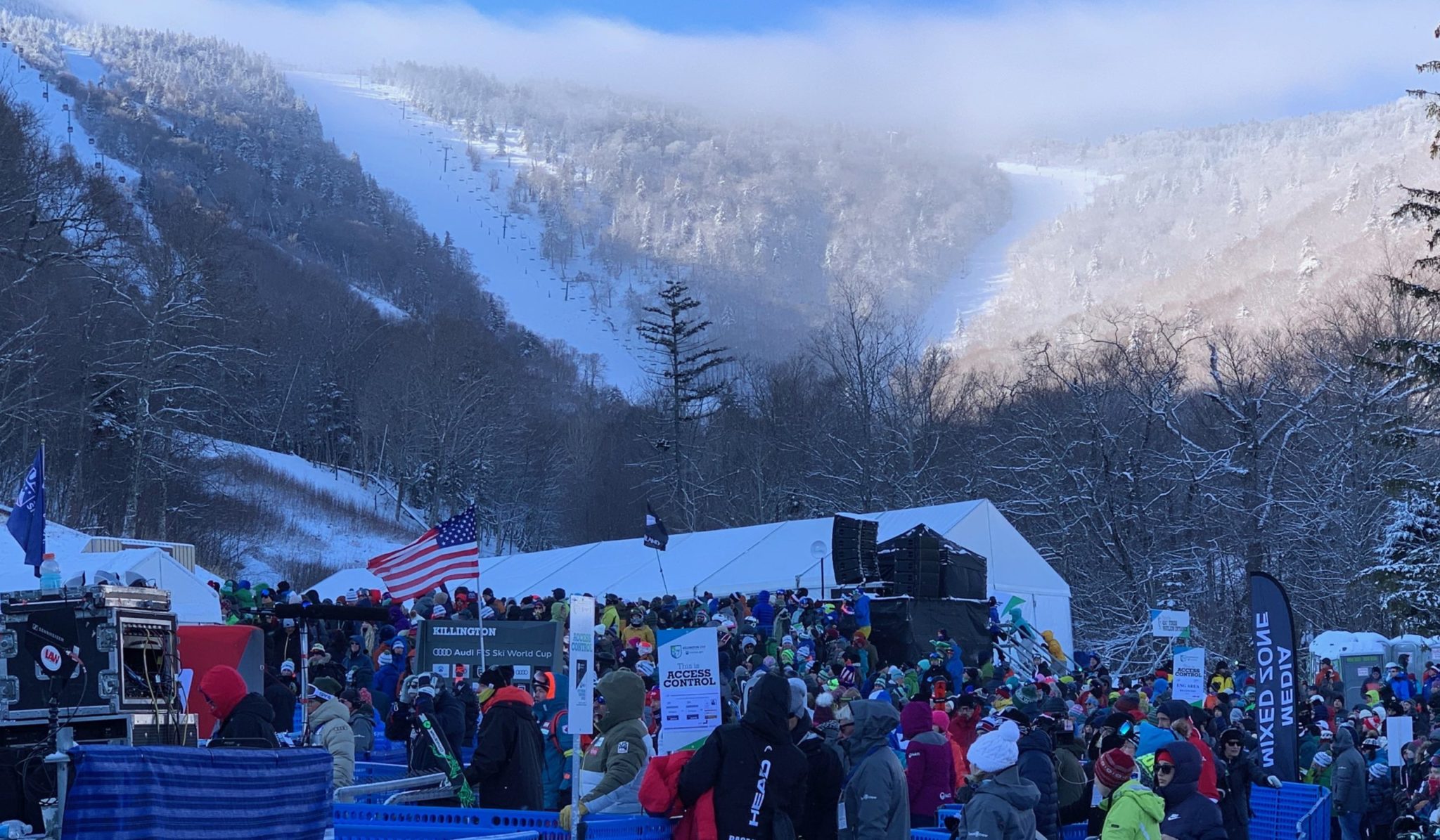
“When you are up on the course you can feel the crowd – it’s palpable—there’s only one other place I’ve ever heard or felt that, Kitzbühel,” said Cochran on Friday. Cochran, a, should know. Cochran first raced the legendary Kitzbühel Hahnenkamm—the most demanding downhill course on the World Cup— when he was a senior at Mt. Mansfield Union School, the public high school in Jericho, Vermont and training at the hill behind his parent’s house in Richmond, Cochran’s Ski Area.
“It’s something that’s hard to describe – it’s as much about feeling the energy of the huge crowd below as it is hearing them.” Cochran remembers that first race in Kitzbühel well: “I was scared to death – it’s straight down. I crashed in one of the early gates and as I slid across the ice I saw Spider Sabich down on the course—he’d crashed just ahead of me. As I slid by, he just looks over and says, ‘Oh hey, Bobby.” Sabich, a top U.S. downhiller was later shot and killed by his girlfriend, pop singer Claudine Longet in Aspen. Cochran went on to race five Hahnenkamms and, in 1973, became the first American to win the Combined event (a downhill and two slalom runs) in Kitzbühel.
Shiffrin, who passed Ingemar Stenmark’s record for slalom victories, at the November World Cup in Levi, Finland, seemed as relaxed as ever coming into this event. When asked what’s the single best thing she’s learned since her days racing at Burke, she said “It’s to not to take myself too seriously. I used to do that, now I don’t and I try to just have fun.”’
Opening hoto by Brooks Curran, this page Lisa Lynn
